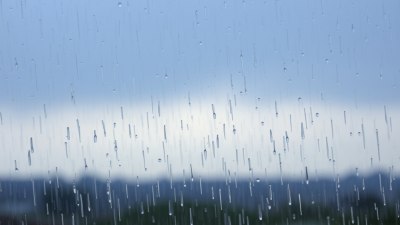Why You Can't Always Trust a '30 Percent Chance of Rain'
Explore why a 30 percent chance of rain doesn't guarantee rainfall and understand how weather forecasts communicate uncertainty.

Image created with Flux Schnell
Weather forecasts have become a staple in our daily routines. We check them before planning trips, deciding what to wear, or scheduling outdoor events. One of the most common forecast phrases is the 'chance of rain,' often expressed as a percentage. For instance, a 30 percent chance of rain might leave many wondering: does this mean it will rain for 30 percent of the day, or that 30 percent of the area will experience rain? The truth is, interpreting these percentages isn't always straightforward, leading to misunderstandings and misplaced trust in weather reports.
Understanding Probability of Precipitation (PoP)
The 'chance of rain' on a weather forecast is technically referred to as the Probability of Precipitation (PoP). The National Weather Service (NWS) defines PoP as the likelihood that at least 0.01 inches of precipitation will fall at a given location during a specified period, usually 12 or 24 hours. It is expressed as a percentage, indicating confidence that precipitation will occur. For example, a 30 percent PoP signifies there's a 30 percent chance that measurable rain will hit the forecast area during the forecast time.
However, many individuals misunderstand what the 30 percent figure means. Some think it means rain will fall 30 percent of the time or over 30 percent of the area. Neither interpretation is necessarily accurate. Instead, it's better to view PoP as a product of meteorologists’ confidence and the area coverage expected, formulated as:
PoP = C x A
Where C is the confidence that precipitation will occur somewhere in the forecast area, and A is the fraction of the area expected to receive precipitation if it occurs.
Why Is It Difficult to Predict Rain Accurately?
Rainfall is highly localized and can vary dramatically over small distances. A shower might drench one neighborhood while a few blocks away, the sky remains clear. This spatial variation poses a challenge for forecasters trying to predict precipitation probabilities across a city or region.
Further complicating forecasts are the dynamic atmospheric conditions that weather models must interpret. Variables such as air temperature, humidity, wind patterns, and topography interact in complex ways. Small changes can influence whether clouds produce rain, how much falls, and where it lands.
Given these factors, meteorologists rely heavily on computer models that simulate atmospheric behavior. These models provide forecasts by crunching vast amounts of data, but they have limitations in resolution and accuracy. As a result, while models can indicate a general likelihood of rain, pinpointing exact locations and timings remains challenging.
Common Misconceptions About a 30 Percent Chance of Rain
Let's examine some common beliefs people have about a 30 percent chance of rain:
- It will rain for 30 percent of the day – This is incorrect. The percentage doesn't relate to time duration but rather the probability of occurrence during the forecast period.
- It will rain over 30 percent of the area – This can be misleading. The forecast area can be quite large, and a 30 percent PoP means rain is possible but not guaranteed to cover a precise portion of the area.
- There is a 30 percent chance I'll get wet – The risk of an individual getting rained on depends on one's location relative to where the rain actually occurs, which can't be predicted exactly with PoP alone.
How Meteorologists Develop the 30 Percent Chance Estimate
When meteorologists issue a 30 percent chance of rain, it generally indicates they are reasonably confident that rain will happen somewhere in the forecast zone but expect it to be spotty. For example, if they believe it's 100 percent certain it will rain over 30 percent of the area, then PoP is 1.0 x 0.3 = 0.3 or 30 percent.
Alternatively, it might mean they have 30 percent confidence that rain will occur somewhere, even if coverage is uncertain. Because of these differing interpretations, meteorologists try to clarify their outlook with additional context, such as terms like "isolated showers" or "scattered storms."
The Role of Communication in Weather Forecasting
Communicating uncertainty is an inherent part of weather forecasting. Using percentages aims to convey the likelihood of precipitation, but it often results in confusion. Different people interpret percentages differently, and without context, a 30 percent chance might seem insignificant or alarming depending on personal experiences.
To address this, some meteorological services use graphical tools, like radar images and coverage maps, to provide visual context. Others use categorical terms like "slight chance" or "likely" alongside percentages to help the public better grasp the expected weather.
When Should You Trust a 30 Percent Chance of Rain?
A 30 percent chance of rain suggests there is some risk of wet weather, but the odds are not overwhelming. Whether you should trust the forecast depends on your plans and tolerance for risk. For casual outdoor activities, it might be worthwhile to carry an umbrella or be prepared for a brief shower. For critical events like weddings or sports, you might consider contingency plans if the risk doesn’t align with your comfort level.
Furthermore, checking updates closer to your event time can provide more precise information. Weather conditions can evolve rapidly, and forecasts often become more accurate as the event approaches.
Factors That Affect the Reliability of a 30 Percent Chance
Several factors influence the reliability of a 30 percent chance forecast, including:
- Season and geography: Some regions experience more predictable precipitation patterns. For example, coastal areas might have more stable forecasts than mountainous regions where weather changes rapidly.
- Time of day: Afternoon thunderstorms during summer months are common but short-lived. Forecasting them can be trickier than steady rain associated with frontal systems.
- Model accuracy: Different forecasting models may produce varying PoP values. Forecasters synthesize model data with local knowledge to refine predictions.
Alternatives and Enhancements to PoP
In recent years, meteorologists have explored alternatives to the traditional PoP to better communicate precipitation risks. One approach is Conditional Probability, which separates the chance it will rain somewhere from how much of the area might receive rain. Another is Impact-Based Forecasting, which focuses on the effects of precipitation rather than just its likelihood.
Some weather services also provide rainfall amount predictions, timing windows, and confidence intervals to give users a fuller picture. Mobile apps and radar animations allow people to track storms in real-time, helping them make informed decisions beyond static percentages.
Personalizing Weather Decisions Beyond Forecast Percentages
Ultimately, weather forecasts are tools that inform but do not dictate human decisions. When confronted with a 30 percent chance of rain, consider your specific circumstances:
- What are your plans, and how would rain impact them?
- Are you willing to accept the risk or take precautions?
- Do you have access to up-to-date weather information?
Combining forecast data with personal judgment and preparedness leads to better outcomes than relying on raw probabilities alone.
A 30 percent chance of rain is a nuanced figure representing probabilistic forecasts. It's not a promise that rain will happen or that it won't. It alerts you to the possibility that precipitation should be considered when planning. Understanding the nature of PoP and the science behind weather prediction helps recalibrate expectations and appreciate the complexities meteorologists navigate daily.
Increasingly, forecasts aim to be more transparent about uncertainty and provide actionable insights beyond simple numbers. Embracing this complexity will enhance public trust and lead to smarter choices in the face of unpredictable weather.











